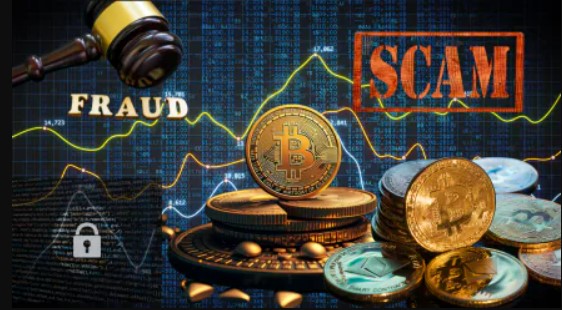Primeltdinc.global Scam -Investors Warning Signs
Online investment and trading sites can look polished and professional — and that makes it easy for bad actors to mask questionable behavior behind a glossy interface. Primeltdinc.global (and closely related domains seen in public complaints) has generated enough negative signals to warrant a careful look. Below I lay out the structure, red flags, public warnings, user reports, and technical indicators so you can decide how risky this site appears. This review focuses on analysis and evidence-based risk signals — it does not include recovery instructions or links to recovery services.
Quick verdict (TL;DR)
Primeltdinc.global shows multiple high-risk indicators: regulatory warnings from reputable authorities, extremely low trust scores from automated reputation services, and numerous user complaints describing aggressive marketing and withdrawal problems. Altogether these signals point to a platform that should be treated as very high risk.
1) Official regulator warnings — the loudest alarm bells
One of the single most important datapoints is that BaFin (Germany’s Federal Financial Supervisory Authority) issued a consumer warning specifically naming primeltdinc.global. When a top-tier regulator publicly cautions consumers about a website’s services, that is not a casual note — it’s a formal consumer alert indicating the service is operating outside the regulated framework and may be offering unauthorised financial products.
In addition to BaFin, U.S. and Canadian consumer/regulatory pages and local consumer protection notices have also flagged operations and brands tied to the “Prime/PrimeLTD” naming pattern as suspicious, reinforcing the concern that this is not an ordinary, properly licensed broker.
2) Trust and reputation engines: very low trust scores
Automated reputation checkers and scam-monitoring sites give primeltdinc.global very low trust scores and classify the site as suspicious or potentially unsafe. Services that scan domain age, WHOIS privacy use, hosting history and complaint patterns tend to converge on the same conclusion: the website shows many markers commonly associated with scam operations (privacy-protected registration, short domain history, low third-party validation). These aggregated machine signals matter because they combine dozens of independent risk factors into a single, interpretable warning.
3) User reports and review patterns — what real people are saying
Public review sites and forum threads display repeated complaints about companies using the “Prime” branding family. On Trustpilot and other review aggregators, users describe aggressive outreach, constant marketing calls, and — in multiple accounts — withdrawal difficulties or sudden communication drop-offs after deposits. While individual positive testimonials exist (as they do for many controversial sites), the volume and consistency of negative reports is what makes the pattern meaningful.
Common themes in user reports:
-
Persistent, unsolicited outreach from sales representatives.
-
Pressure to deposit and to “upgrade” accounts to access higher returns (a frequently cited tactic).
-
Complaints of blocked or delayed withdrawals and poor or disappearing customer support.
4) Claims vs verifiable licensing
A recurring pattern with sites like this is the claim of regulation without evidence. Some pages associated with the “Prime” brand have presented alleged licence numbers or named regulatory bodies, but those claims do not match official registries when checked by watchdogs and forum researchers. Independent reviews note that the platform is not listed with major regulators’ registries (and, as noted, a regulator has warned consumers about it). That mismatch — glossy regulatory claims on the site vs absence in official registers — is a classic red flag.
5) Domain behavior and technical signals
Technical checks show typical scam-industry behaviours: the domain is relatively new (short track record), WHOIS data is privacy-protected, and automated detectors flag the site for low legitimacy. Those attributes alone aren’t proof of wrongdoing — legitimate startups also use privacy protection and new domains — but when combined with regulator warnings and user complaints they form a concerning pattern.
6) Marketing style and sales tactics
From reported user experiences and screenshots posted on review platforms, outreach tactics include high-pressure phone calls, promises of large, rapid returns, and claims that the platform offers proprietary trading or AI-driven profits. The sales tactics described by reviewers — persistent calls even after requests to stop, pushy relationship managers, and rapid escalation to “limited time” offers — are consistent with aggressive acquisition funnels used in many investment scams.
7) Comparisons to known scam patterns
Putting the pieces together — regulator warnings, poor automated trust scores, many user complaints, claims of regulation that don’t check out, privacy-protected domain registration, and aggressive marketing — this is essentially the checklist used by consumer protection agencies when identifying high-risk operators. The match here is strong enough that multiple consumer protection bodies and independent watch sites have flagged primeltdinc.global or related “Prime” brands as suspicious.
8) Could there be an innocent explanation?
It’s possible the brand is a small, unregulated startup operating in jurisdictions with minimal oversight, or a marketing affiliate site that misrepresents services. Some users may have genuine positive experiences early on. But none of those possibilities change the hard facts: official consumer warnings exist, and independent reputation engines rate the domain poorly. That combination substantially raises the likelihood that the risks are real and materially important for anyone considering engagement.
9) Final assessment — what this means for you
Based on regulator notices, aggregated reputation data, user complaints about outreach and withdrawals, and inconsistent licensing claims, primeltdinc.global currently presents a high-risk profile. Multiple independent sources and at least one major regulator have raised alarms about this operation, and the technical + user-experience signals line up with well-known scam patterns. For clarity: this review does not attempt to adjudicate legal guilt, but rather to summarize publicly available red flags and official warnings that indicate the site is not operating in the transparent, regulated manner investors typically expect.
Report Primeltdinc.global Scam and Recover Your Funds
If you have lost money to Primeltdinc.global Scam, it’s important to take action immediately. Report the scam to Jayen-consulting.com, a trusted platform that assists victims in recovering their stolen funds. The sooner you act, the better your chances of reclaiming your money and holding these fraudsters accountable.
Scam brokers like Primeltdinc.global continue to target unsuspecting investors. Stay informed, avoid unregulated platforms, and report scams to protect yourself and others from financial fraud.
Stay smart. Stay safe.






